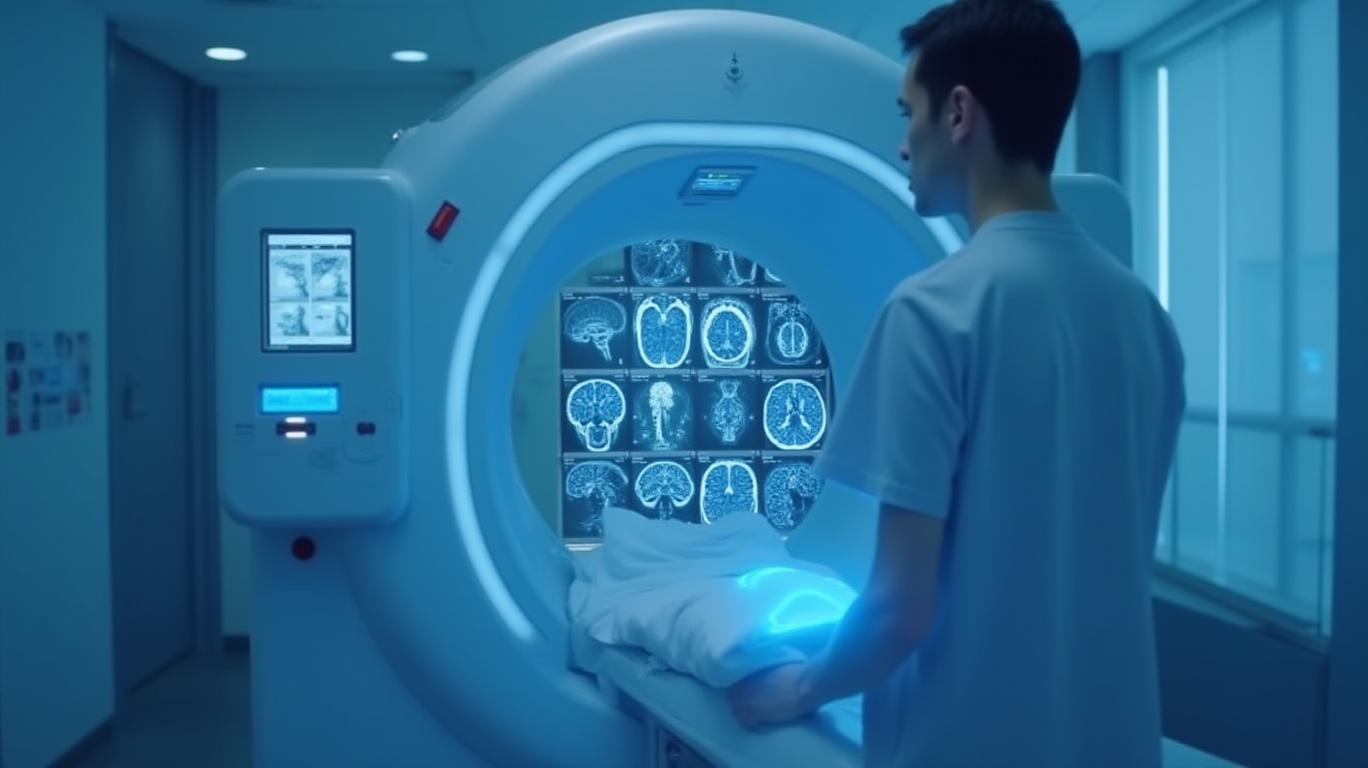Hyperfine's Optive AI™ Is About to Revolutionize Healthcare—Here's Why You Need to Act Now
The healthcare tech world just got hit with a bombshell: Hyperfine's FDA clearance of its Optive AI™ software for the Swoop® Portable MRI system. This isn't just an upgrade—it's a game-changer that could upend the $10 billion MRI market and make cutting-edge imaging accessible to every corner of the globe. If you're not already invested in
, here's why you need to get in now—before everyone else catches on.Let's start with the basics: the Swoop® system, first cleared in 2021, was already a disruptor. It's a portable, ultra-low-field MRI machine that fits in an exam room, operates without helium, and costs a fraction of traditional MRI systems. But with Optive AI™, Hyperfine has just turned this device into a diagnostic powerhouse.

The key here is the AI. Optive AI™ uses advanced algorithms to enhance every step of imaging—from noise reduction to post-processing—resulting in image quality rivaling 1.5T MRI scanners, the gold standard in hospitals. Doctors testing the software this year reported “jaw-dropping” clarity, especially in critical areas like brain imaging. This isn't just a niche improvement; it's a credibility milestone that could finally silence skeptics who doubted portable MRI's diagnostic value.
But here's where it gets exciting for investors: this isn't just about better pictures. It's about transforming where and how healthcare is delivered. Imagine ERs, ICUs, and even neurology offices where patients no longer have to be carted miles to a hospital for an MRI. With Swoop® and Optive AI™, doctors can diagnose strokes, tumors, or injuries at the bedside or in the exam room—within minutes. That's not just convenience; it's lifesaving speed and lower costs for providers.
And the timing couldn't be better. The NEURO PMR study—currently underway with top neurology practices—aims to prove that Swoop® can slash imaging costs by up to 60% in outpatient settings. Meanwhile, Medicare and Medicaid now reimburse accredited offices using portable MRI systems, opening the door to $100 million in new revenue streams for Hyperfine.
Now, let's talk about the market. Hyperfine isn't just targeting hospitals—it's going after neurology offices, rural clinics, and even emerging markets where traditional MRI infrastructure is impossible. With Optive AI™, they're expanding into a $2.5 billion outpatient imaging market that's growing at 8% annually. And remember: this rollout starts in Q3 2025—meaning the real earnings pop is just months away.
Critics will say “MRI giants will fight back.” But here's the rub: companies like GE and Siemens can't compete on price or portability. Their high-field systems require multimillion-dollar installations, helium cooling, and specialized technicians—barriers Hyperfine's plug-and-play Swoop® obliterates. This is disruption at its finest, and the FDA's seal of approval just gave Hyperfine a moat against competitors.
So what's the play here? Hyperfine's stock has already surged on early Optive AI™ buzz, but this is just the beginning. The Q3 rollout, combined with reimbursement wins and outpatient adoption, could send shares skyrocketing. This isn't a fad—it's a generational shift in healthcare access.
If you believe in innovation that saves lives and money, Hyperfine is your play. The catalysts are lined up: a proven product, regulatory tailwinds, and a market hungry for affordable solutions. Don't wait for Wall Street to catch on—act now.
This is one of those rare moments where technology, timing, and profit align. Hyperfine isn't just a stock—it's the future of healthcare. And right now, it's sitting on the launchpad.
Final note: Hyperfine's potential is undeniable, but always do your own research. Check out their clinical trial data and financials before diving in.

Comments
No comments yet